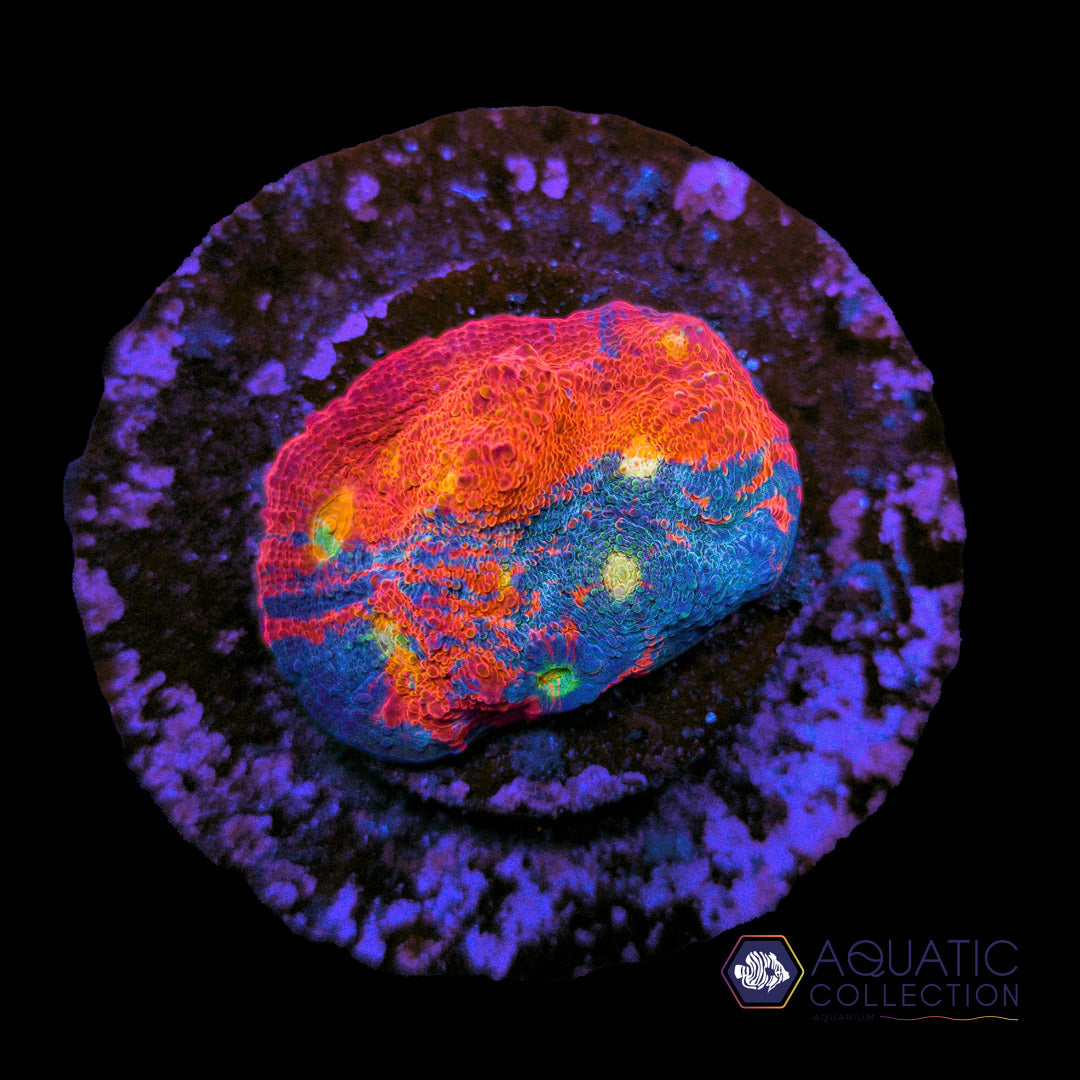Aquatic Collection Aquarium
AQC Rainbowish Chalice
AQC Rainbowish Chalice
Couldn't load pickup availability
Species: Echinophyllia sp.
Aproximate Size: 1"
Colors: Red, blue, yellow, green, orange, purple
*Please keep in mind that due to variances in species, your item may not appear exactly like the one pictured. Individual specimens' approximate size ranges may also differ. If you want to buy an "as pictured" piece, please visit our WYSIWYG section.
Chalice coral, is a broad name given to a group of corals such as the Echinophyllia spp., Oxypora spp., etc., is a captivating and popular choice among marine aquarists, celebrated for its unique morphology and vibrant colors. Here’s a detailed description:
Physical Characteristics
-
Shape and Structure: Chalice corals typically have a plate-like or encrusting form, characterized by a thick, fleshy tissue covering a hard skeleton. They can grow in a variety of shapes, including flat discs or mounds, with some species exhibiting a more branching structure.
-
Polyps: Each chalice coral is composed of numerous small polyps that extend during the night for feeding. These polyps are generally short and can be easily retracted into the coral’s tissue, creating a smooth surface when not feeding.
-
Coloration: Chalice corals are renowned for their vibrant hues, often featuring bright greens, blues, reds, and purples. Many species display striking patterns, such as stripes or mottling, which can change under different lighting conditions, especially under actinic lights.
Habitat and Distribution
-
Natural Environment: Chalice corals are typically found in shallow tropical waters of the Indo-Pacific region, often residing on reef slopes or flats where they can receive ample light and moderate water flow.
-
Light Requirements: They generally thrive in moderate to bright lighting, but some species can tolerate lower light levels. Proper lighting is essential for maintaining their vibrant colors and supporting the symbiotic zooxanthellae living within their tissues.
Care Requirements
-
Water Flow: Chalice corals prefer moderate water flow, which helps keep debris away from their surface while allowing for proper feeding. Too much flow can stress them, while too little can lead to stagnant conditions.
-
Water Parameters: Maintaining stable water conditions is crucial for their health:
- Temperature: 76-80°F (23-27°C)
- pH: 7.8-8.4
- Salinity: 1.025-1.026 specific gravity
- Nitrate and Phosphate: Low levels are preferred, as high nutrients can lead to algae growth that competes with the coral.
Feeding
Chalice corals are primarily heterotrophic, relying on feeding for nutrition, although they also benefit from the energy produced by their symbiotic zooxanthellae. To promote optimal health:
- Feeding Options: They thrive on a diet of small particulate foods, such as coral pellets, finely chopped seafood, or liquid coral foods. Feeding is best done in the evening when polyps are extended and can capture food more effectively.
Behavior and Aggression
-
Aggressiveness: Chalice corals can exhibit territorial behavior and have potent sweeper tentacles that can sting neighboring corals. It’s essential to provide adequate space around them to minimize aggression.
-
Compatibility: They can coexist with various tank mates, including other LPS corals, but should be monitored for interactions, especially with more aggressive species. Avoid placing them too close to corals that might harm them.
These corals are for saltwater aquariums only.
This is the exact specimen you will receive, however, due to differences in tank lighting and screen settings, this item may look slightly different in your aquarium.
For measurement reference use the picture with the black grid and the ruler.
For acclimation details see here.
Share


